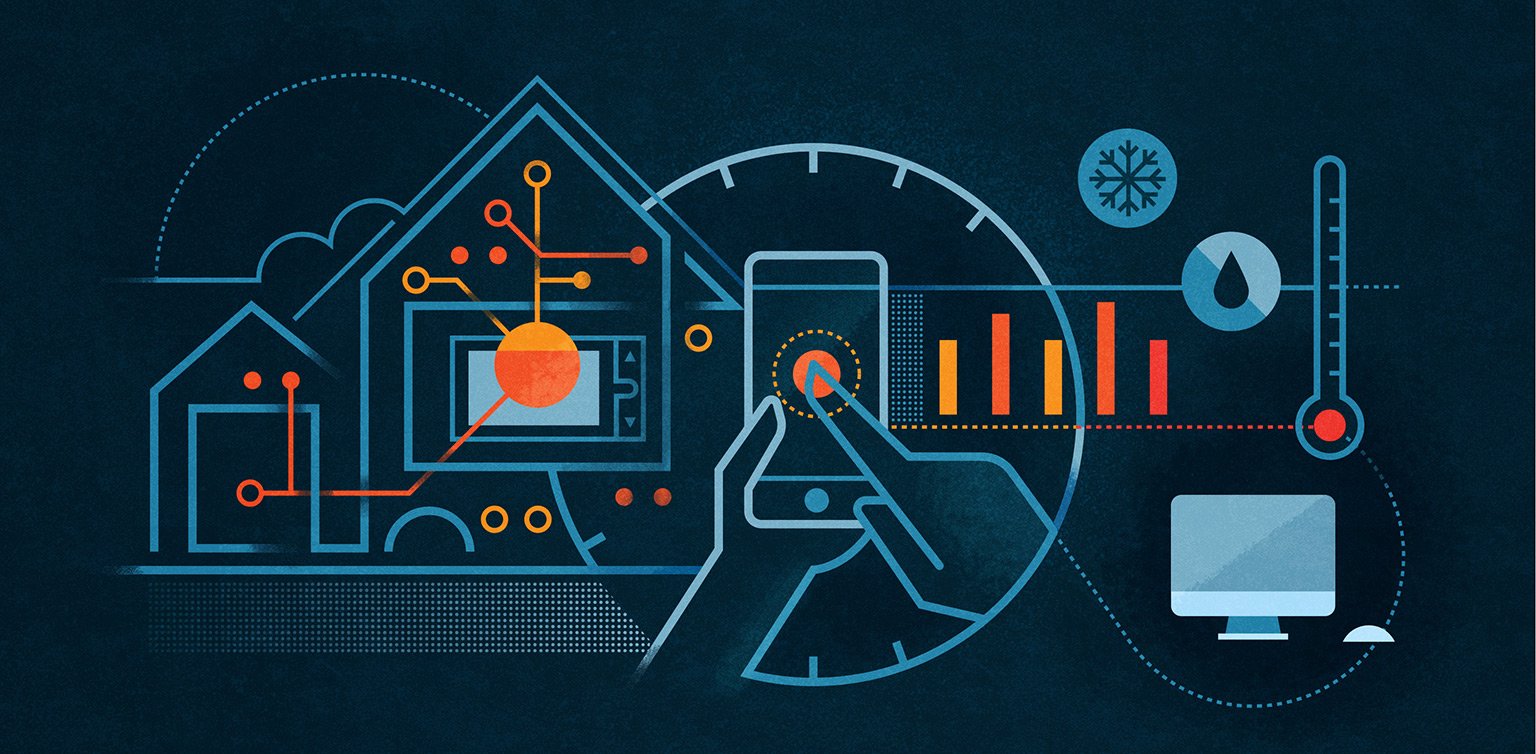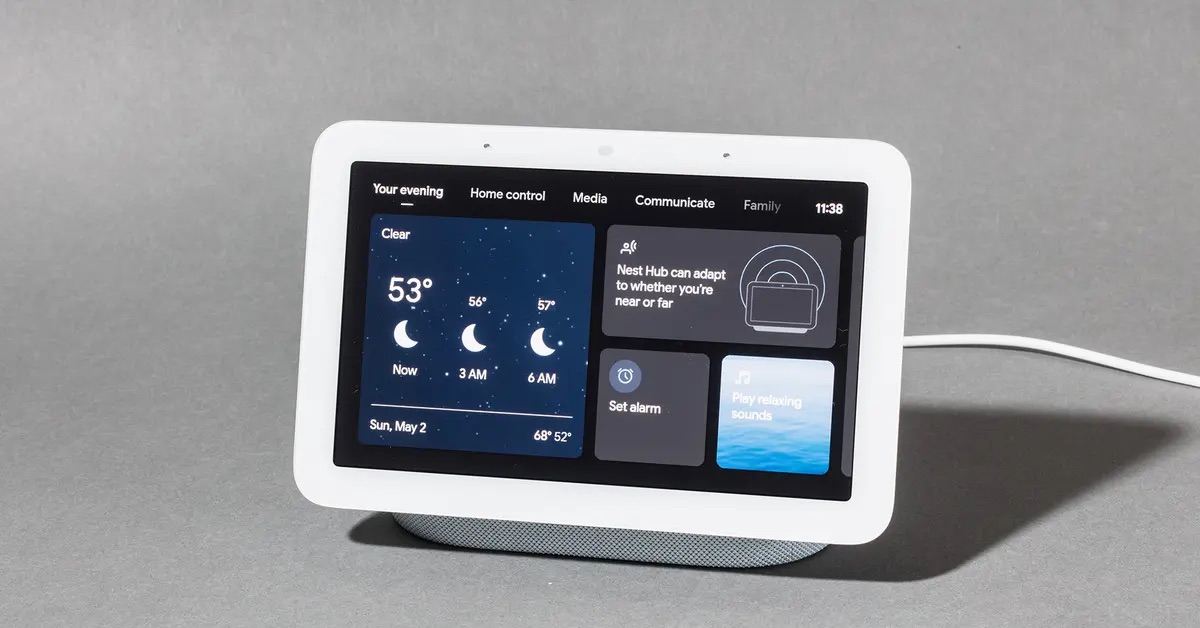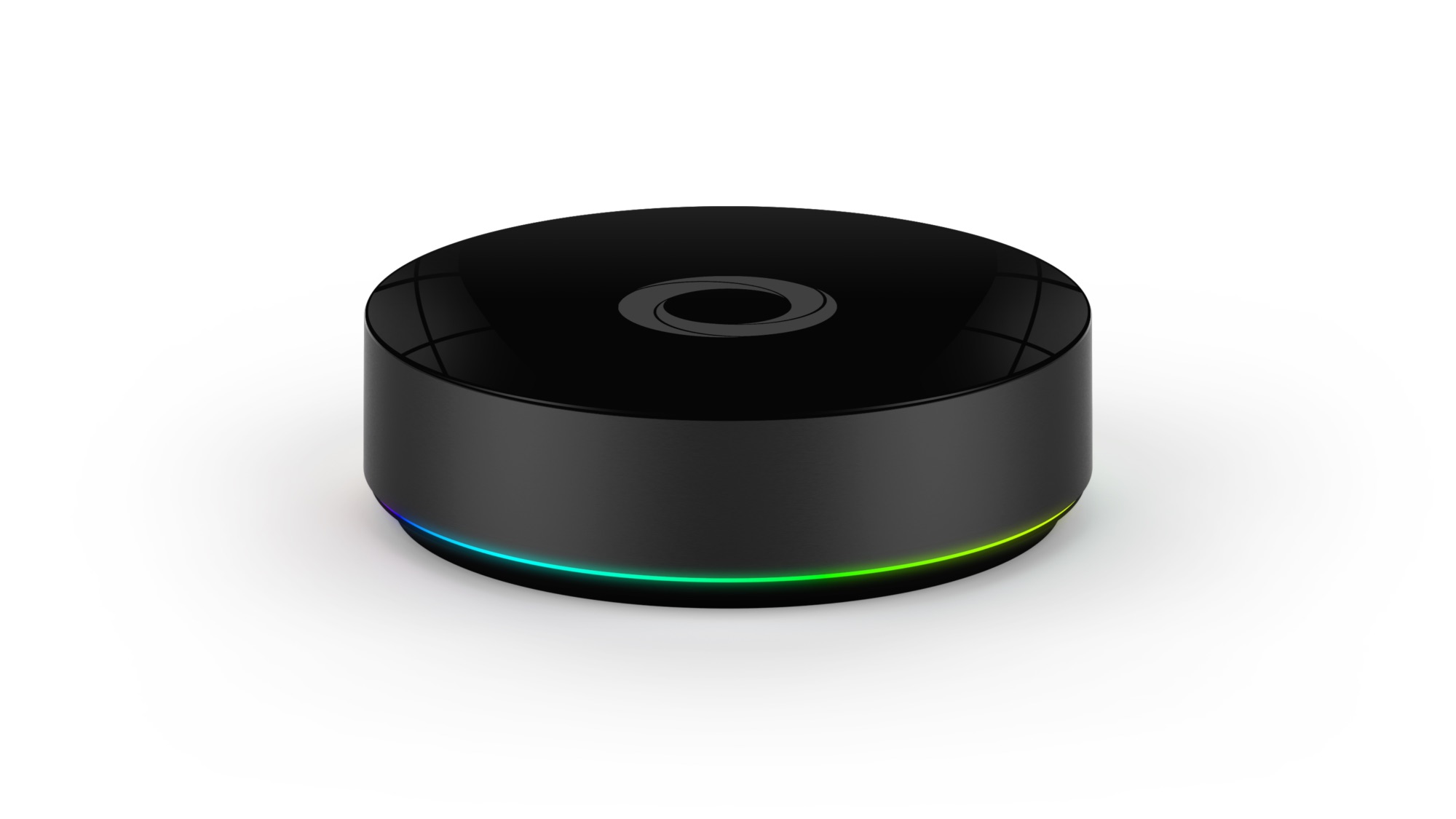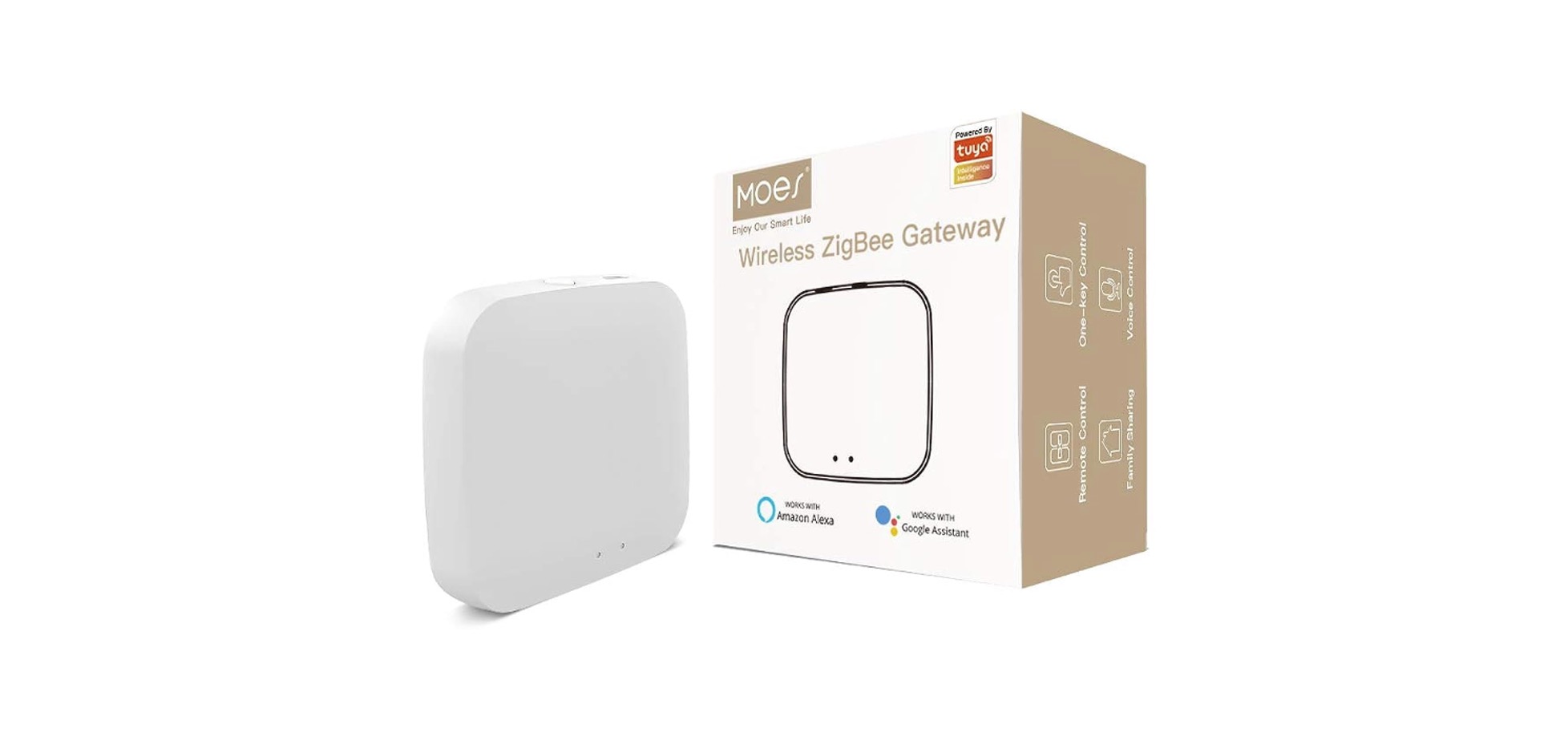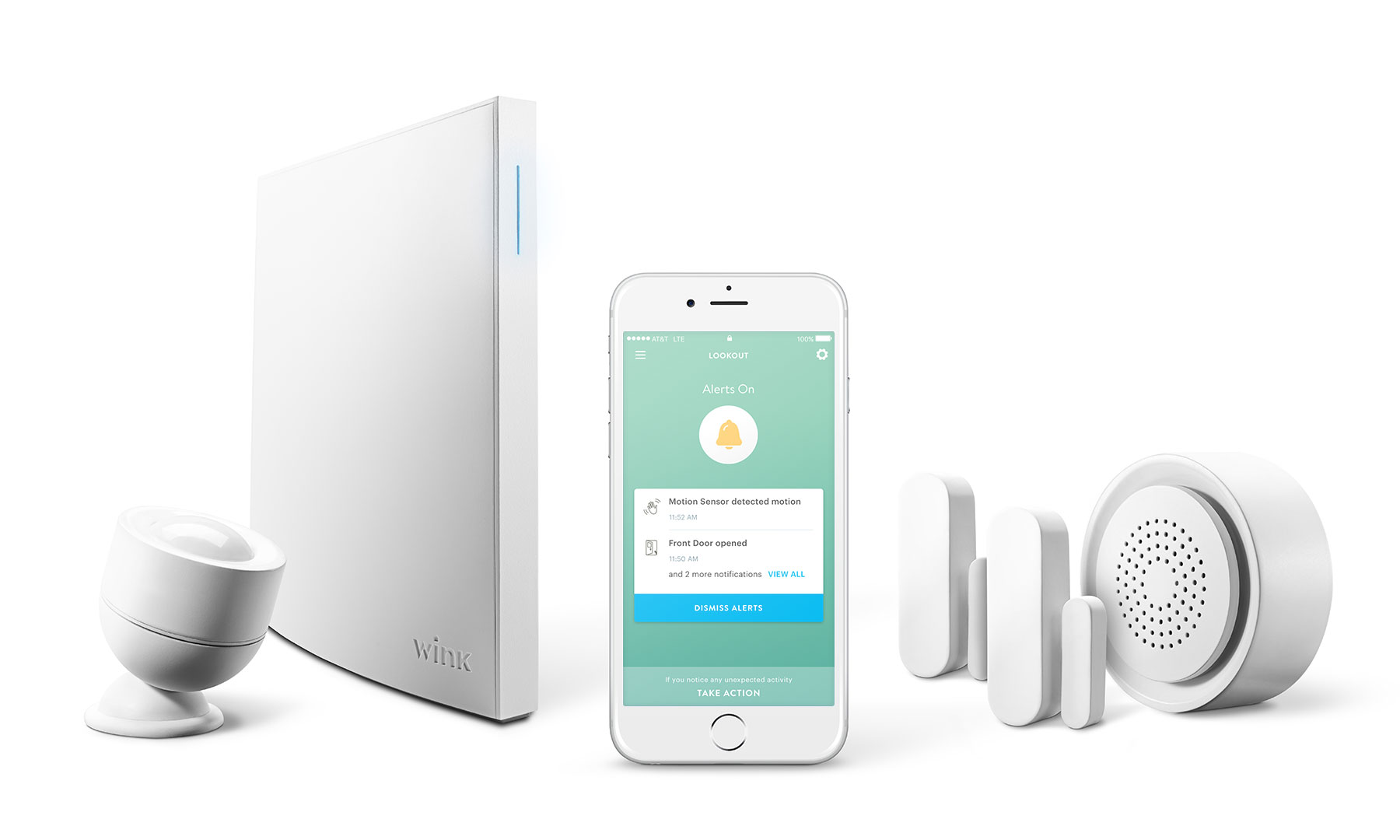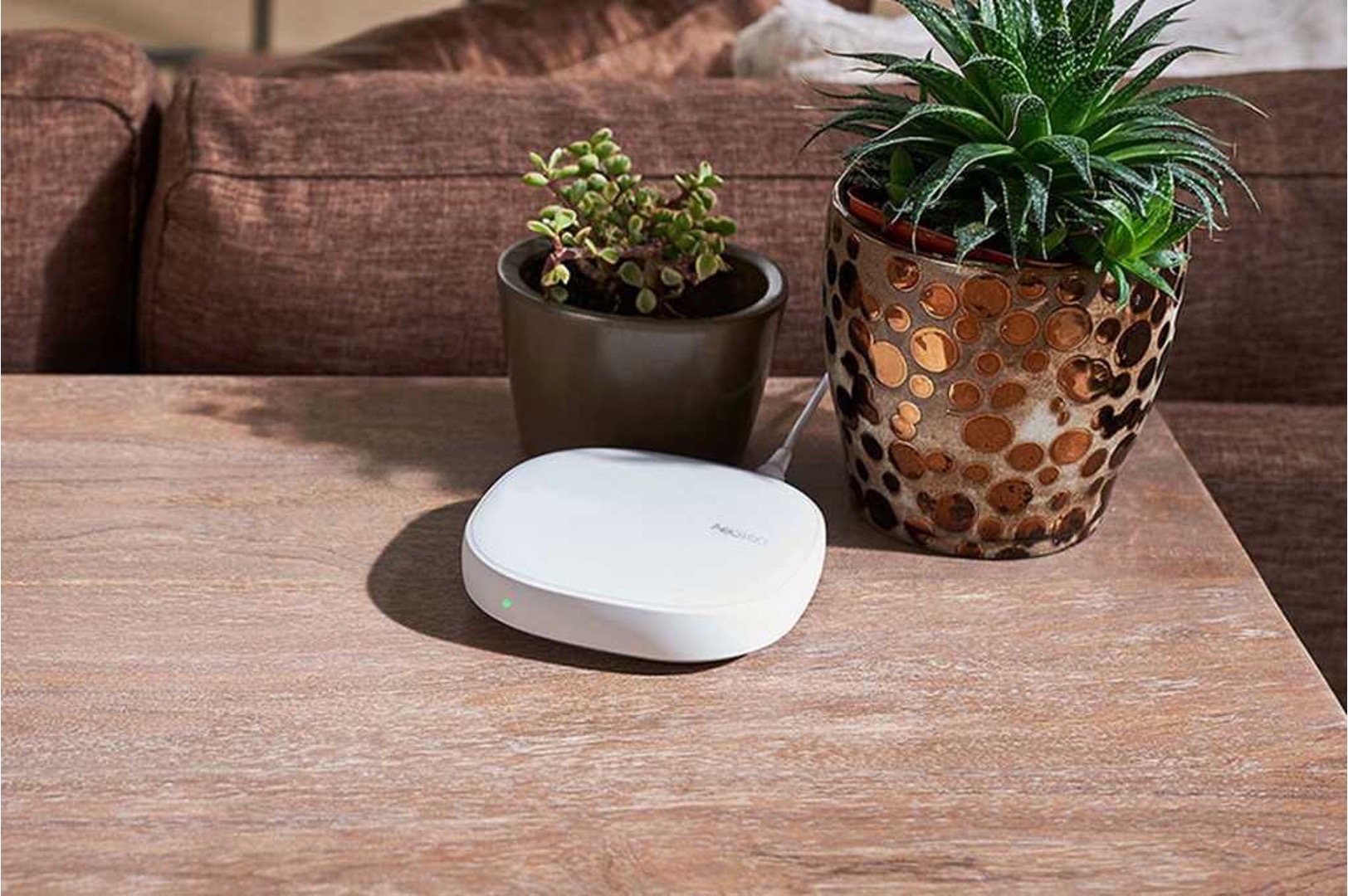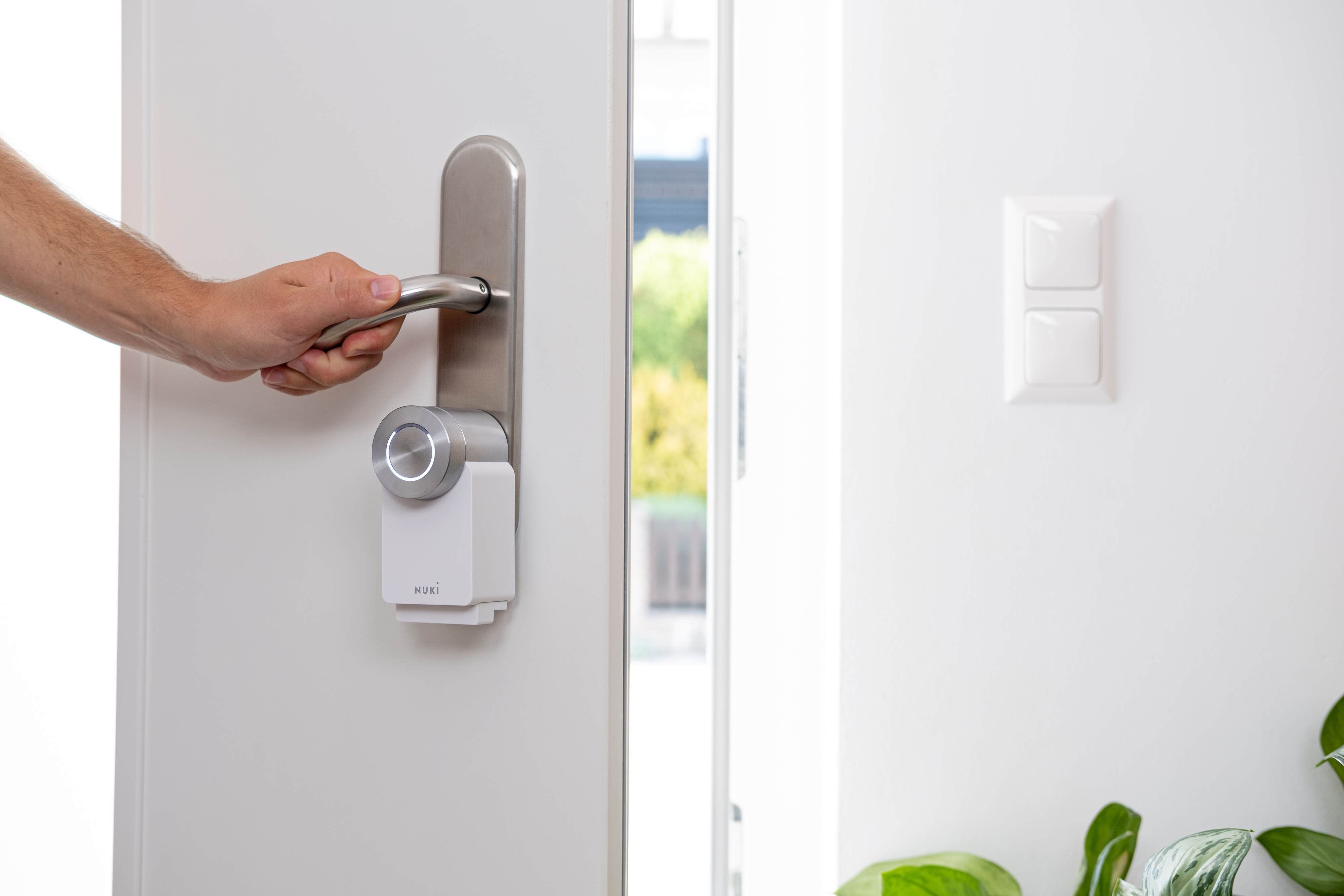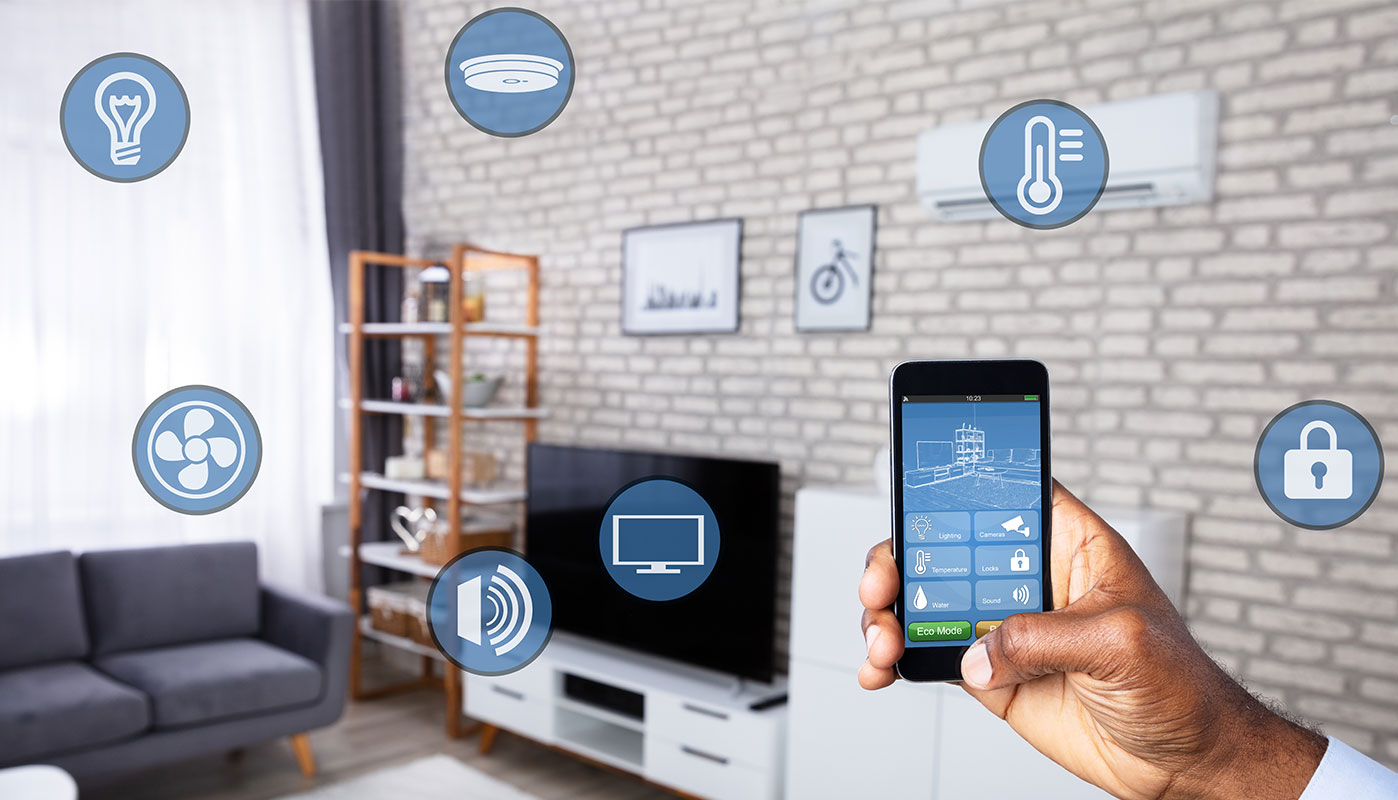Introduction
Welcome to the future of home automation – smart home technology. In this modern age, our lives are becoming increasingly connected and automated, and our homes are no exception. Smart home technology is revolutionizing the way we live, offering unparalleled convenience, comfort, and control. But what exactly is smart home technology?
Smart home technology refers to the integration of various devices and systems within a household that can be controlled remotely and automated to perform tasks. These devices communicate with each other and with the homeowner through the internet, allowing for seamless connectivity and control.
Imagine being able to control your lights, thermostat, and security system with just a tap on your smartphone. Picture arriving home to a perfectly adjusted temperature, the lights turned on, and your favorite song playing in the background – all thanks to smart home technology.
But smart home technology goes beyond just convenience. It offers a host of benefits that greatly enhance our daily lives. This article will delve into the various benefits, popular devices, how it works, security concerns, challenges, and future trends in smart home technology.
From added security and energy efficiency to improved entertainment systems and increased comfort, smart home technology is transforming the way we experience and interact with our living spaces. Let’s explore the amazing capabilities and countless opportunities that this innovative technology has to offer.
What is a Smart Home Technology?
A smart home technology is a system that integrates various devices, appliances, and systems in a household to create an interconnected network controlled by the homeowner. It harnesses the power of the internet and wireless communication to automate and streamline daily tasks, providing convenience, efficiency, and peace of mind.
At the core of smart home technology is the concept of connectivity. Devices such as smart thermostats, lighting systems, security cameras, door locks, and entertainment systems are all designed to seamlessly communicate with each other and with the homeowner through a central control hub or a smartphone app.
One of the key features of smart home technology is remote control. With just a few taps on your smartphone, you can remotely access and control various functions of your home. Forgot to turn off the lights before leaving? No problem; you can do it from anywhere. Want to preheat the oven before you arrive? Easy; just use your phone to do it.
Another fundamental aspect of smart home technology is automation. Through programmable routines or AI algorithms, smart devices can learn your habits and adjust settings accordingly. For example, your smart thermostat can learn your temperature preferences and adjust itself accordingly throughout the day, saving energy and ensuring comfort without the need for manual adjustments.
Furthermore, smart home technology can be customized to cater to individual needs and preferences. Homeowners have the flexibility to choose the devices, platforms, and protocols that best suit their lifestyle, allowing for a highly personalized and tailored experience.
Some of the common devices and systems that can be integrated into a smart home include:
- Smart lighting: Control and automate your lights, set timers, and adjust brightness levels.
- Smart security systems: Monitor and control security cameras, door locks, and alarm systems from anywhere.
- Smart thermostats: Set and manage temperature settings, save energy, and create personalized schedules.
- Smart entertainment systems: Enjoy seamless integration of audio and video devices, control media playback, and create customized home theater experiences.
- Smart appliances: Connect and manage your kitchen appliances, such as refrigerators, ovens, and washing machines, for increased convenience and efficiency.
With the advancements in technology and the increasing availability of smart devices, the potential applications of smart home technology are vast and continue to expand. From simplifying daily routines to enhancing comfort, energy efficiency, and security, smart home technology truly has the power to transform our living spaces.
Benefits of Smart Home Technology
Smart home technology offers a wide array of benefits that can greatly enhance and improve our daily lives. From convenience and energy efficiency to increased safety and comfort, here are some of the key advantages of embracing smart home technology:
1. Convenience:
One of the most significant benefits of smart home technology is the unparalleled convenience it provides. With the ability to control various aspects of your home remotely, you can easily manage your home’s functions with just a tap on your smartphone or through voice commands. Whether it’s turning off lights, adjusting the thermostat, or locking doors, you can do it from anywhere, saving time and effort.
2. Energy Efficiency:
Smart home technology enables energy-efficient living by allowing you to monitor and control energy consumption. With smart lighting systems and thermostats, you can optimize energy usage and reduce utility bills. For example, lights can be programmed to turn off automatically when no one is in the room, and thermostats can automatically adjust temperature settings based on occupancy or time of day.
3. Increased Safety and Security:
Smart home technology enhances the safety and security of your home. You can remotely monitor and control security cameras, receive alerts for unusual activities, and even lock or unlock doors from anywhere. Additionally, smart smoke detectors and water leak sensors can send immediate notifications to your smartphone, helping you prevent potential disasters.
4. Improved Comfort and Ambiance:
With smart home technology, you can create a personalized and comfortable living environment. Adjust the lighting levels to create the perfect ambiance for different occasions, control blinds or curtains remotely for privacy or natural light, and set up automated routines that align with your preferred schedule and preferences.
5. Enhanced Entertainment Experience:
Smart home technology can elevate your entertainment experience to new heights. With integrated audio and video systems, you can effortlessly stream music throughout your home, control media playback with voice commands, and even create customized home theater experiences with the touch of a button.
6. Peace of Mind:
Another significant benefit of smart home technology is the peace of mind it offers. Whether you’re at work or on vacation, you can monitor and stay connected to your home. Receive alerts for security breaches, check in on live camera feeds, and even remotely grant access to trusted individuals. This level of control and awareness brings comfort and peace of mind to homeowners.
These are just a few of the many benefits that smart home technology brings to our lives. As the technology continues to advance, the possibilities are endless, and the potential for increased convenience, safety, and efficiency in our homes is continually expanding.
Popular Smart Home Devices
The popularity of smart home technology has skyrocketed in recent years, leading to a wide range of devices and appliances designed to enhance our living spaces. Here are some of the most popular smart home devices that have gained traction among homeowners:
1. Smart Speakers and Voice Assistants:
Smart speakers, such as Amazon Echo with Alexa or Google Home with Google Assistant, have become a staple in many households. These devices serve as the central control hub for other smart devices and allow you to control them using voice commands. From playing music and providing weather updates to controlling lighting and setting reminders, smart speakers offer a hands-free, convenient way to manage your smart home.
2. Smart Thermostats:
Smart thermostats, like the Nest Learning Thermostat or ecobee, have revolutionized energy management in homes. These devices learn your temperature preferences and adjust settings accordingly. They can be controlled remotely, create energy-saving schedules, and even provide energy usage reports to help you optimize your heating and cooling systems, resulting in cost savings and increased comfort.
3. Smart Lighting:
Smart lighting systems, such as Philips Hue or LIFX, allow you to control and automate your lights. You can adjust the brightness, set timers or schedules, and even change the color of your lights to create different moods and ambiances. These systems can be controlled remotely through smartphone apps or integrated with voice assistants for hands-free control.
4. Smart Security Systems:
Smart security systems provide an extra layer of protection for your home. Devices like Ring Video Doorbell or Arlo cameras allow you to monitor your property remotely and receive instant notifications when motion is detected. Smart locks, such as August or Yale, enable keyless entry and the ability to grant access to trusted individuals remotely. These security systems offer peace of mind and enhanced control over your home’s security.
5. Smart Appliances:
Smart appliances have become increasingly popular, adding convenience and efficiency to daily tasks. From smart refrigerators that can suggest recipes or create shopping lists to smart washing machines that can be controlled remotely, these appliances make household chores more manageable and streamlined. With features like energy monitoring and customized settings, smart appliances can help you save time, energy, and resources.
6. Smart Entertainment Systems:
Smart entertainment systems integrate audio and video devices, allowing you to create a seamless and immersive multimedia experience. Smart TVs, streaming devices like Apple TV or Roku, and sound systems like Sonos or Bose can all be controlled and synchronized to provide a personalized entertainment setup. With voice assistants, you can effortlessly control media playback and adjust settings without leaving the comfort of your couch.
These are just a few examples of popular smart home devices on the market. From controlling lights and temperature to enhancing security and entertainment, these devices bring convenience, comfort, and efficiency to our living spaces. With the continued advancement of technology, we can expect even more innovative and exciting smart home devices to enhance our everyday lives.
How Does Smart Home Technology Work?
Smart home technology operates on the principle of connectivity and automation. It involves a combination of hardware, software, and communication protocols that enable devices and systems to communicate, interact, and work together seamlessly. Here’s a breakdown of how smart home technology works:
1. Central Control Hub or Gateway:
Smart home devices typically connect to a central control hub or gateway. This hub serves as the brain of the smart home system, allowing devices to communicate with each other and with the homeowner. It acts as a bridge between the devices and the internet, facilitating the exchange of information and commands.
2. Wireless Communication:
Smart home devices communicate with each other and with the control hub using wireless communication protocols such as Wi-Fi, Bluetooth, Zigbee, or Z-Wave. These protocols enable devices to transmit and receive data, commands, and status updates over short distances or through the internet.
3. Device Control and Management:
Smart home devices can be controlled and managed through various methods. First, they can be controlled manually using physical controls or interfaces on the device itself. Additionally, most smart devices can be controlled remotely through smartphone apps or web interfaces. Many devices also support voice control, allowing users to interact with them using voice commands through voice assistants like Amazon Alexa or Google Assistant.
4. Automation and Routines:
Automation is a key component of smart home technology. Devices can be programmed to perform specific tasks automatically or based on triggers. For example, you can set up a routine to turn on the lights and adjust the thermostat when you arrive home or have the blinds open automatically in the morning. Automation can be based on time schedules, sensor inputs, or even linked to other devices and events.
5. Integration and Interoperability:
Smart home devices are designed to work together and integrate seamlessly. This interoperability allows devices from different manufacturers and with different protocols to communicate and share information. Central control hubs and cloud-based platforms play a crucial role in ensuring interoperability by providing a unified interface and standard protocols for device integration.
6. Data Privacy and Security:
Smart home technology takes data privacy and security seriously. Encryption is used to secure the communication between devices and control hubs, preventing unauthorized access. Password protections and authentication methods are implemented to ensure that only authorized individuals can control the devices. It’s important to choose reputable brands and follow best practices for securing your smart home devices and networks.
By leveraging wireless communication, central control hubs, automation, and integration, smart home technology creates an interconnected ecosystem where devices can communicate, share information, and perform tasks to simplify and enhance our daily lives. With the continuous advancement of technology, we can expect even more sophisticated and interconnected smart home systems in the future.
Security and Privacy Concerns with Smart Home Technology
While smart home technology offers numerous benefits, it also raises security and privacy concerns that should not be overlooked. As our homes become more connected, it’s important to be aware of potential risks and take necessary precautions. Here are some common security and privacy concerns associated with smart home technology:
1. Data Privacy:
Smart home devices collect and store data about our daily routines, preferences, and activities. This data can include sensitive information about our habits, schedules, and even intimate aspects of our lives. There is a risk that this data may be accessed or exploited without our consent, highlighting the importance of robust data privacy protections.
2. Unauthorized Access:
Smart home devices are vulnerable to cyberattacks, which can lead to unauthorized access to our homes and devices. Weak passwords, unsecure Wi-Fi networks, and outdated firmware can create entry points for hackers. It’s crucial to implement strong passwords, regularly update device firmware, and secure our home networks with encryption to minimize the risk of unauthorized access.
3. Device Malfunction or Failure:
As with any technology, there is a possibility of device malfunction or failure. This can result in unexpected behavior, loss of control, or even system-wide disruptions. It’s important to consider system redundancies, manufacturer reputation, and backup plans to mitigate the impact of such failures.
4. Lack of Standardization:
The lack of industry-wide standards for smart home devices and protocols can create vulnerabilities. Incompatible devices or conflicting software can introduce security risks and hinder interoperability. Choosing devices that adhere to widely recognized standards and ensuring that firmware and software are up to date can help mitigate these risks.
5. Physical Security Risks:
Smart home technology relies on connectivity and wireless communication, which increases the risk of physical tampering. Intruders may attempt to compromise devices or intercept signals, potentially gaining control of your smart home system. Securing physical access to your devices and ensuring that your wireless network is protected with strong encryption can help minimize these risks.
6. Cloud-Based Storage and Data Breaches:
Many smart home devices rely on cloud-based services to store and process data. While cloud storage can offer convenience and accessibility, it also introduces the risk of data breaches. It’s important to choose reputable providers that prioritize data security and encryption to minimize the risk of unauthorized access to your data.
To address security and privacy concerns, it’s essential to take proactive measures. This includes using strong passwords, keeping devices and firmware up to date, regularly reviewing and approving access permissions, and monitoring network traffic for any anomalies. Additionally, staying informed about emerging threats, following best practices, and investing in reputable and secure smart home devices can go a long way in ensuring the security and privacy of your smart home.
Challenges of Implementing Smart Home Technology
While smart home technology presents exciting possibilities, its implementation is not without challenges. These challenges can arise from various factors, including technical limitations, interoperability issues, and user adoption. Here are some of the key challenges that homeowners and technology providers face when implementing smart home technology:
1. Cost:
One of the major challenges of implementing smart home technology is the initial cost. Smart devices tend to be more expensive than traditional counterparts, making it costly to outfit an entire home with smart devices. Additionally, there may be infrastructure costs involved, such as upgrading electrical systems or network connectivity, which can further add to the overall cost.
2. Interoperability:
Interoperability is a significant challenge in the smart home ecosystem. Different manufacturers may use different communication protocols and standards, making it difficult for devices from different brands to work seamlessly together. This fragmentation can limit the choices available to homeowners and may require additional effort to ensure compatibility between devices.
3. Complexity:
Smart home technology can be complex to set up and configure, especially for those who are not technologically inclined. The installation process, network setup, and device pairing can be overwhelming, leading to frustration and discouraging some homeowners from fully embracing smart home technology.
4. Privacy Concerns:
As discussed earlier, privacy concerns are a significant challenge. The collection and use of personal data by smart home devices raise privacy issues that need to be addressed. Homeowners must trust that their data is secure and not being used or shared without their consent.
5. Compatibility with Existing Infrastructure:
Many homeowners already have existing infrastructure in their homes, such as traditional appliances or electrical systems. Integrating these legacy systems with smart home technology can be a challenge, as not all devices may be compatible or easily retrofit into existing setups.
6. User Adoption and Familiarity:
Some users may be resistant to adopting smart home technology due to a lack of understanding or familiarity. The learning curve associated with new technology can deter individuals from embracing these advancements and opting to stick with traditional methods instead.
To overcome these challenges, it is important for technology providers to focus on user-friendly interfaces, ensure interoperability standards, and address privacy concerns. Educating homeowners about the benefits, providing detailed installation instructions, and offering comprehensive customer support can also contribute to a smoother implementation process and increased user adoption of smart home technology.
Future Trends in Smart Home Technology
The world of smart home technology is continuously evolving, driven by rapid advancements in technology and consumer demand for more convenience and automation. Here are some exciting future trends that we can expect to see in smart home technology:
1. Artificial Intelligence (AI) Integration:
Artificial intelligence will play a significant role in the future of smart home technology. AI-powered virtual assistants, such as Amazon Alexa and Google Assistant, will become more intelligent and capable of understanding and responding to complex commands and queries. Machine learning algorithms will enable devices to learn from user preferences and optimize automation processes, making smart homes even smarter and more intuitive.
2. Enhanced Voice Control:
Voice control will continue to improve and become more seamless in smart homes. Natural language processing and voice recognition technologies will enable more accurate and intuitive interactions with smart home devices. Voice assistants will be able to understand context, engage in meaningful conversations, and execute multiple commands in a single sequence.
3. Integration of Internet of Things (IoT) Devices:
The integration of more IoT devices will expand the capabilities of smart home technology. Devices such as wearables, smart appliances, and health monitoring devices will seamlessly communicate and share data with each other, providing a comprehensive ecosystem of interconnected devices. For example, fitness data from a wearable device can be used to adjust thermostat settings or provide personalized health recommendations.
4. Enhanced Energy Management:
The focus on energy efficiency will continue to grow, with smart home technology playing a key role in optimizing energy usage. Smart grids and energy management systems will integrate with smart home devices to analyze consumption patterns and adjust energy usage accordingly. This will not only reduce utility costs for homeowners but also contribute to a more sustainable and eco-friendly future.
5. Smarter Security Systems:
Smart home security systems will become more intelligent and proactive, utilizing advanced machine learning algorithms and computer vision technologies. Facial recognition, object detection, and behavior analysis will enhance the accuracy of security monitoring, reducing false alarms and providing better protection. Integration with smart locks, video doorbells, and alarm systems will create a comprehensive security ecosystem.
6. Enhanced User Interfaces:
User interfaces will become more intuitive and user-friendly, simplifying the setup and control of smart home devices. Touchscreen displays, augmented reality, and gesture recognition technologies will add new dimensions to user interactions, making it easier for homeowners to customize and control their smart homes.
The future of smart home technology holds immense potential for further enhancing our living spaces. With advancements in AI, IoT, energy management, security systems, and user interfaces, smart homes will become more intelligent, seamless, and personalized to our needs. As these future trends continue to become a reality, smart homes will offer unparalleled convenience, energy efficiency, security, and comfort for homeowners around the world.
Conclusion
The rise of smart home technology has revolutionized the way we live, transforming our houses into intelligent, connected spaces. With the ability to control and automate various devices, smart homes offer convenience, energy efficiency, enhanced security, and improved comfort. From controlling lights and temperature to managing security systems and entertainment devices, the possibilities are endless.
As we have explored, smart home technology brings numerous benefits to homeowners. It offers unparalleled convenience by allowing us to control and monitor our homes remotely through smartphones or voice commands. Energy efficiency is improved through the optimization of heating, cooling, and lighting systems, resulting in reduced utility bills and a smaller carbon footprint.
Smart home technology enhances security, providing peace of mind by allowing homeowners to monitor their properties and control access remotely. It also enriches our entertainment experiences, creating immersive home theater setups and seamless integration of audio and video devices.
However, implementing smart home technology comes with its own set of challenges. The initial cost, interoperability issues, and complexity of installation and configuration can be obstacles to widespread adoption. Privacy and security concerns must be addressed to ensure the protection of personal data and prevent unauthorized access.
Looking ahead, the future of smart home technology is promising. Artificial intelligence integration, enhanced voice control, and the integration of IoT devices will drive even greater automation and convenience. Energy management systems and smarter security systems will make our homes more sustainable and secure. Additionally, improved user interfaces will simplify the control and customization of smart home devices.
In conclusion, smart home technology has the power to transform our everyday lives, offering unparalleled convenience, efficiency, security, and comfort. While there are challenges to overcome, the potential benefits are substantial. As technology continues to advance, we can look forward to even more innovative and exciting developments in the world of smart home technology.







